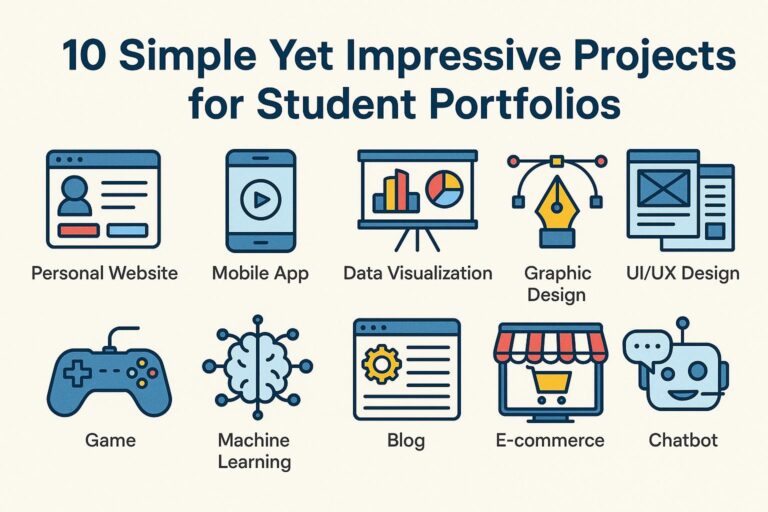
Modern web development frameworks offer multiple ways to render web applications. Two of the most widely used approaches are Client-Side Rendering (CSR) and Server-Side Rendering (SSR). While both aim to deliver content to the user, they differ significantly in terms of performance, SEO, infrastructure requirements, and user experience.
This guide provides a comprehensive comparison between CSR and SSR, covering core concepts, benefits, drawbacks, technical workflows, and when to choose each rendering strategy — including hybrid options and static site generation.
1. What Is Rendering in Web Development?
Rendering is the process of converting application code — including HTML, CSS, and JavaScript — into a viewable, interactive page in the browser. Rendering can happen:
- On the client side (in the browser)
- On the server (before reaching the browser)
- Using a hybrid or static approach
Key Rendering Strategies:
- Client-Side Rendering (CSR): The browser downloads and executes JavaScript to build the page after the initial load.
- Server-Side Rendering (SSR): The server generates and sends fully rendered HTML on every request.
- Static Site Generation (SSG): The HTML is pre-rendered at build time and served as static files.
- Incremental Static Regeneration (ISR): A variant of SSG where pages can be updated incrementally after deployment.
- Hydration: The process of attaching JavaScript behavior to pre-rendered HTML on the client side.
2. What Is Server-Side Rendering (SSR)?
With SSR, the server processes each request, generates a complete HTML document with dynamic data, and sends it to the client.
Workflow of SSR:
- User requests a page.
- Server fetches necessary data.
- HTML is rendered on the server with content.
- The browser receives and displays the HTML.
- JavaScript is loaded and hydrates the page for interactivity.
Frameworks Supporting SSR:
- Next.js (React)
- Nuxt.js (Vue)
- ASP.NET MVC
- Ruby on Rails
- Django (with templating)
- Laravel (Blade templates)
Advantages of SSR:
- Faster Time to First Byte (TTFB): HTML is sent immediately from the server.
- Better SEO Support: Search engine crawlers can parse static HTML easily.
- Improved Social Sharing: Metadata (Open Graph, Twitter Cards) is pre-rendered.
- Content Availability Without JavaScript: Enhances accessibility and compatibility.
Disadvantages of SSR:
- Higher Server Load: Every user request requires server-side rendering and data fetching.
- Potential Latency: Server must compute and send HTML for every route on every request.
- Slower Interactivity: User interactions might be delayed until JavaScript hydration completes.
- More Complex Infrastructure: Requires a full backend setup, and may involve load balancing or caching layers.
3. What Is Client-Side Rendering (CSR)?
With CSR, the browser receives a minimal HTML shell and a JavaScript bundle. The JavaScript executes in the browser, renders the content, and updates the DOM.
Workflow of CSR:
- Browser receives a blank HTML page and JavaScript bundle.
- Browser downloads and executes the JavaScript.
- JavaScript makes API calls to fetch content.
- Content is rendered dynamically in the browser.
- Routing, rendering, and updates occur entirely on the client.
Frameworks Typically Using CSR:
- React
- Vue (Vue CLI)
- Angular
- Svelte (with SvelteKit for SSR)
Advantages of CSR:
- Rich Interactivity: Dynamic components and SPA-like behavior are easier to build.
- Reduced Server Dependency: Offloads rendering logic to the browser.
- Efficient State Management: Easier to manage complex user interactions and local UI state.
- Scalable Front-End Architecture: CSR apps can often be deployed on static hosting services with APIs.
Disadvantages of CSR:
- Slower Initial Load: Content is not visible until JavaScript is fully downloaded and executed.
- SEO Limitations: Search engines may not index content rendered post-load unless additional optimization is applied.
- Blank Screen on Slow Networks: Users may see a blank or loading state before the page becomes interactive.
- JavaScript Dependency: The site may fail if JavaScript is blocked or fails to load.
4. Comparison Table: Client-Side vs Server-Side Rendering
| Feature | Server-Side Rendering (SSR) | Client-Side Rendering (CSR) |
|---|---|---|
| Initial Page Load | Fast | Slow |
| SEO Friendliness | High (HTML is readable by crawlers) | Low (requires dynamic rendering solutions) |
| JavaScript Dependency | Optional (basic content works without JS) | Required (entire UI depends on JS) |
| Interactivity | Delayed until hydration | Immediate (after JS loads) |
| Server Load | High (renders on every request) | Low (server sends static shell) |
| Caching | Easier via CDN or full-page cache | Harder (depends on app state and API data) |
| Code Complexity | Requires backend rendering logic | Requires frontend state and route management |
| Use Case Suitability | Ideal for content-heavy and SEO-focused apps | Ideal for highly interactive SPAs |
5. When to Use Server-Side Rendering (SSR)
Use SSR when:
- Your application relies on search engine indexing (e.g., e-commerce, blogs, news).
- First paint speed is critical (e.g., landing pages).
- The page has dynamic data that must appear immediately.
- You require pre-rendered meta tags for social sharing (Facebook, Twitter).
- Users may have limited JavaScript capabilities or accessibility needs.
6. When to Use Client-Side Rendering (CSR)
Use CSR when:
- Your application is highly interactive (e.g., dashboards, real-time apps).
- Users spend long sessions inside the app (e.g., email clients, chat systems).
- Your application is a Single Page Application (SPA) with dynamic routing.
- SEO is not a priority or is handled through alternative methods (e.g., serverless SSR endpoints).
7. Hybrid and Modern Alternatives
Many frameworks now allow combining SSR and CSR to optimize performance, interactivity, and SEO.
Hybrid Rendering Examples:
- Next.js: Supports SSR, CSR, and Static Site Generation (SSG) in one codebase.
- Nuxt.js: Offers universal rendering with toggleable client/server modes.
- Remix: Server-first approach with client hydration.
- React Server Components: Experimental feature allowing server-rendered components to coexist with CSR.
Incremental Static Regeneration (ISR):
- Pages are statically generated and then revalidated in the background.
- Combines speed of SSG with dynamic content updates.
- Supported by frameworks like Next.js and Astro.
8. Static Site Generation (SSG): A Third Option
SSG pre-renders pages at build time and delivers them as static HTML files.
When to Use SSG:
- Content changes infrequently (e.g., marketing sites, documentation).
- You want CDN-level performance and minimal backend logic.
- You prioritize build-time safety and version control for published content.
Advantages of SSG:
- Blazing-fast performance via static hosting (e.g., Netlify, Vercel, GitHub Pages).
- Simplified infrastructure (no backend server needed).
- Great SEO with fully rendered HTML.
- Low cost and maintenance.
Disadvantages of SSG:
- Longer build times with many pages.
- Lacks real-time data unless integrated with APIs.
- Limited dynamic functionality without client-side enhancements.
Final Thoughts
There is no one-size-fits-all rendering strategy. The optimal choice depends on your application’s:
- Performance goals
- SEO needs
- User interaction patterns
- Hosting environment
- Team skillset and tooling preferences
Recommendation Summary:
| Goal | Recommended Strategy |
|---|---|
| Maximum SEO & fast TTFB | Server-Side Rendering (SSR) |
| Interactive dashboard or SPA | Client-Side Rendering (CSR) |
| Static content, docs, landing | Static Site Generation (SSG) |
| Combination of all | Hybrid (SSR + CSR + SSG) |
Understanding these strategies empowers developers to build web applications that balance speed, scalability, accessibility, and user experience.

I’m Shreyash Mhashilkar, an IT professional who loves building user-friendly, scalable digital solutions. Outside of coding, I enjoy researching new places, learning about different cultures, and exploring how technology shapes the way we live and travel. I share my experiences and discoveries to help others explore new places, cultures, and ideas with curiosity and enthusiasm.






